Best ferns for shade – 8 fascinating fronds to grow
Introduce some stunning shade-loving ferns to your yard with these top picks
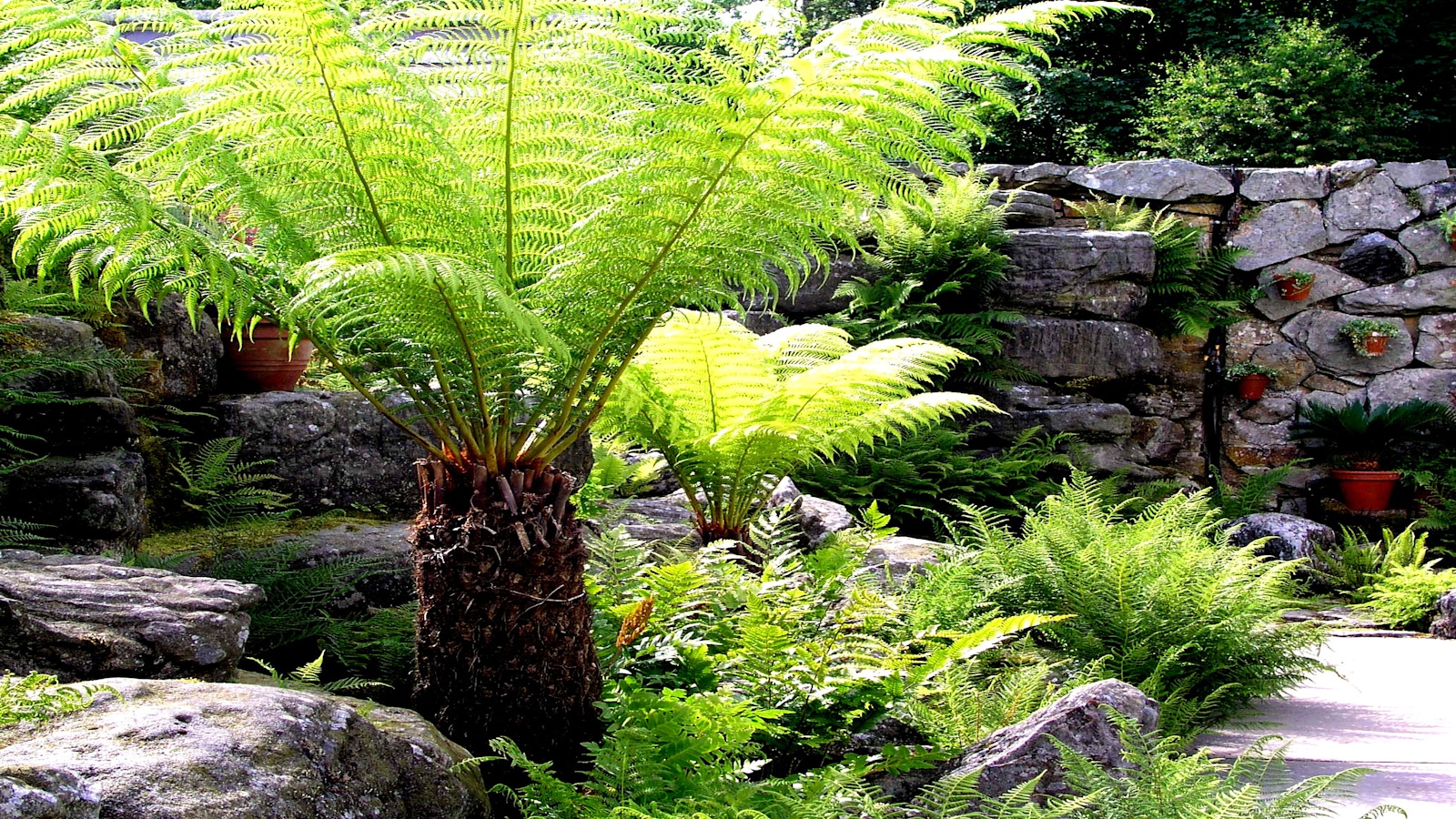

Knowing the best fern varieties for shade can completely transform the trickiest areas of your yard, from barren to lush and vibrant.
Incredibly versatile, tough and needing little upkeep, they are great for introducing contrasting colors and textures as well as providing a dense backdrop for woodland blooms. One of the best ground cover plants, they also make spectacular container plants too.
If you are looking for some frond inspiration to bring extra interest to your yard, you are in luck. We have profiled 8 of the best fern varieties for shade, which will thrive in the darkest of spaces.
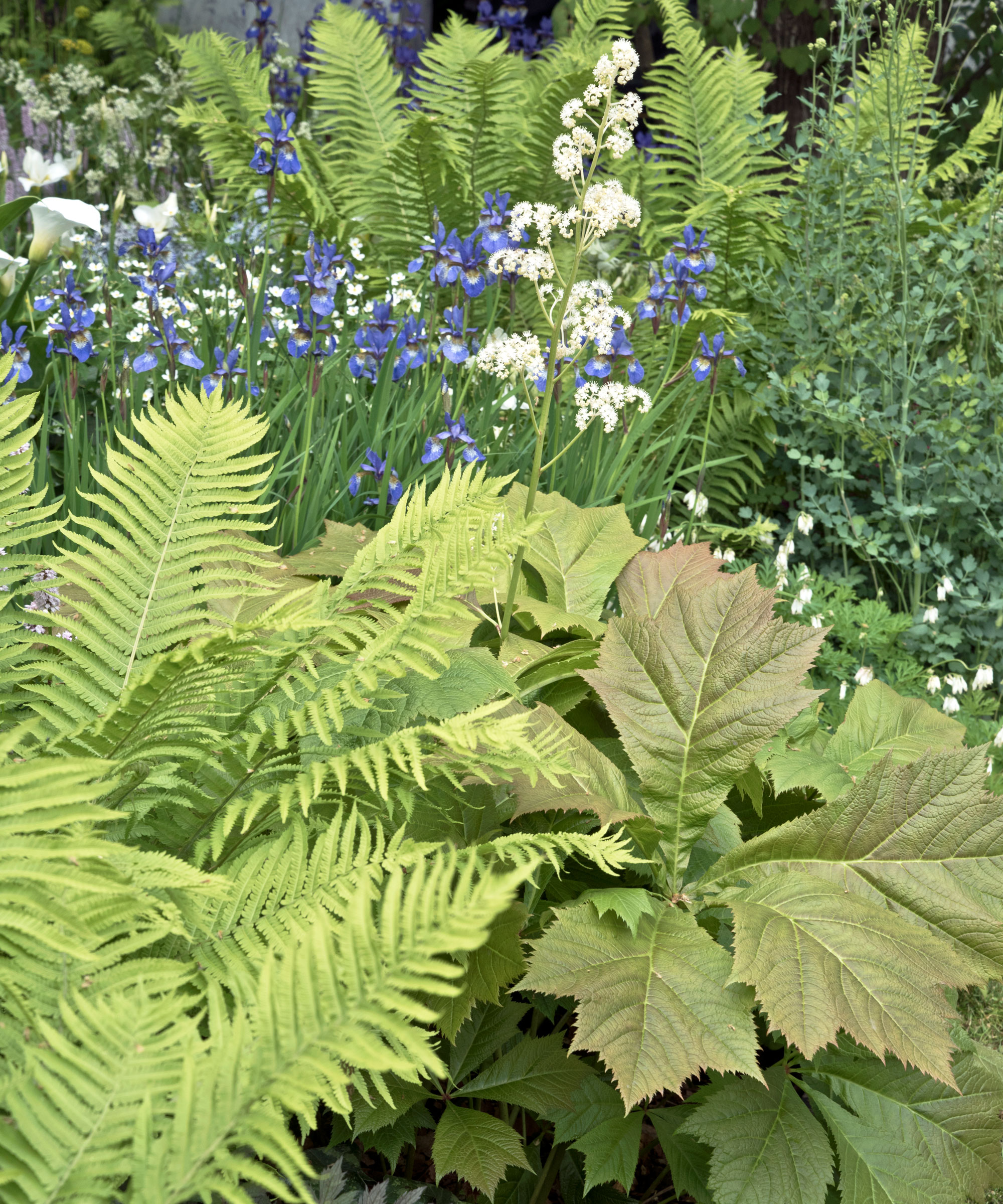
8 of the best ferns for shade
‘Most fern types are winter hardy in zones 3-8 and prefer humus rich, moist soils and thrive under a canopy of trees in the shade,’ says horticultural expert, Katie Sunderlage. ‘Although they can take some morning sun, the hot afternoon sun should be avoided for best results.’
Ostrich Fern
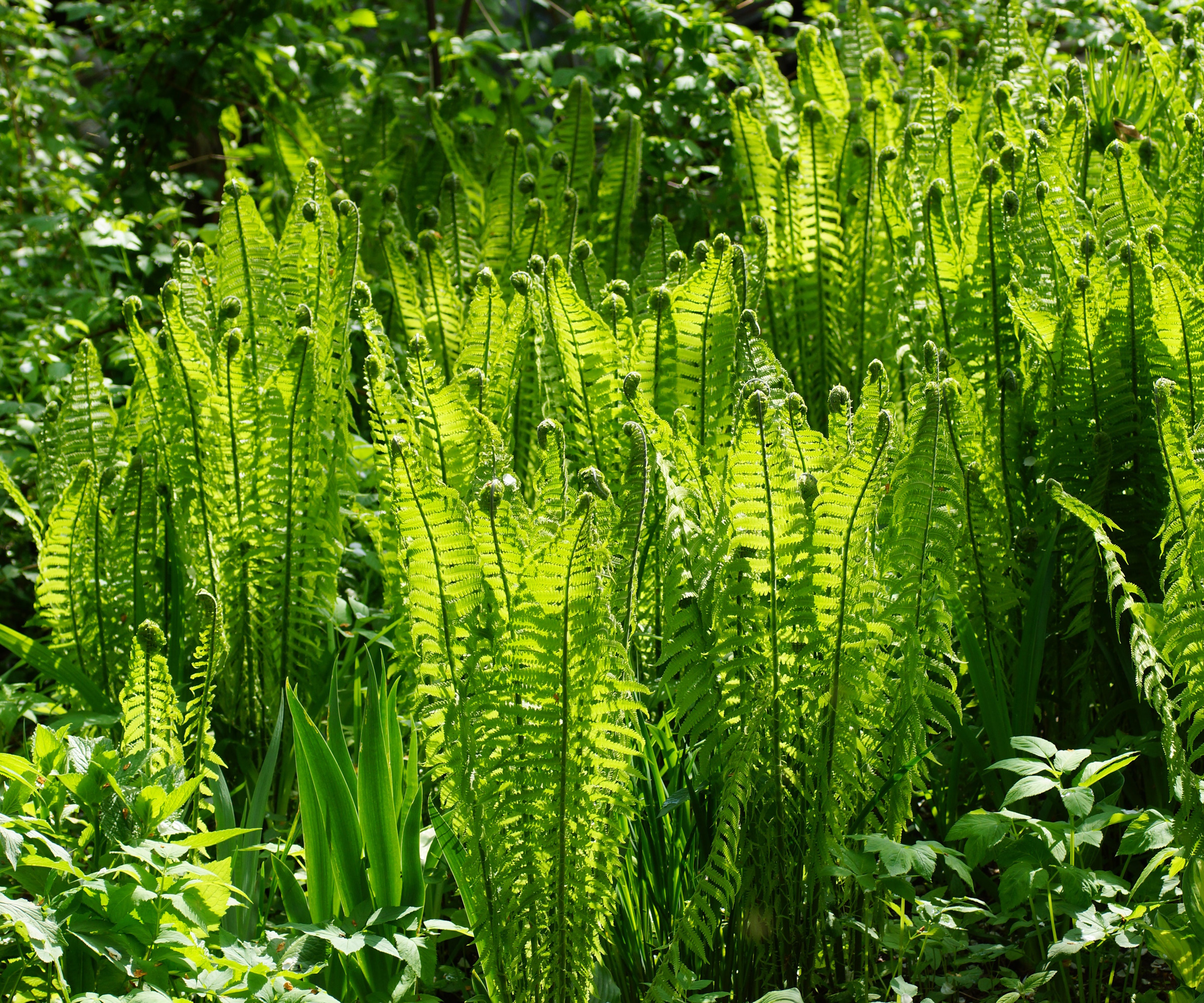
‘Ostrich Ferns are instantly recognizable’, says Katie Sunderlage. ‘Large, bright green fronds have a more upright, vase-like habit with slight fanning at the top. This variety can reach 3-4 inches tall at maturity, creating a lush landscape in a wooded area. Combine with other shade loving plants such as lower growing hosta, astilbe, coral bells and bluebells.’
Hardy in zones 3-8, they prefer full shade but will do well in filtered morning sunlight as well. Ostrich ferns or Matteuccia struthiopteris thrive in moist soil rich with organic matter and are deer and rabbit resistant too.
Katie also adds, ‘These stately ferns are deciduous. It is best to trim back the fronds to about 2-3 inches above the soil level in late fall when they start turning brown. Fronds will emerge again the following spring.’
Design expertise in your inbox – from inspiring decorating ideas and beautiful celebrity homes to practical gardening advice and shopping round-ups.
You can find ostrich ferns available from Nature Hills.
Soft Shield Fern
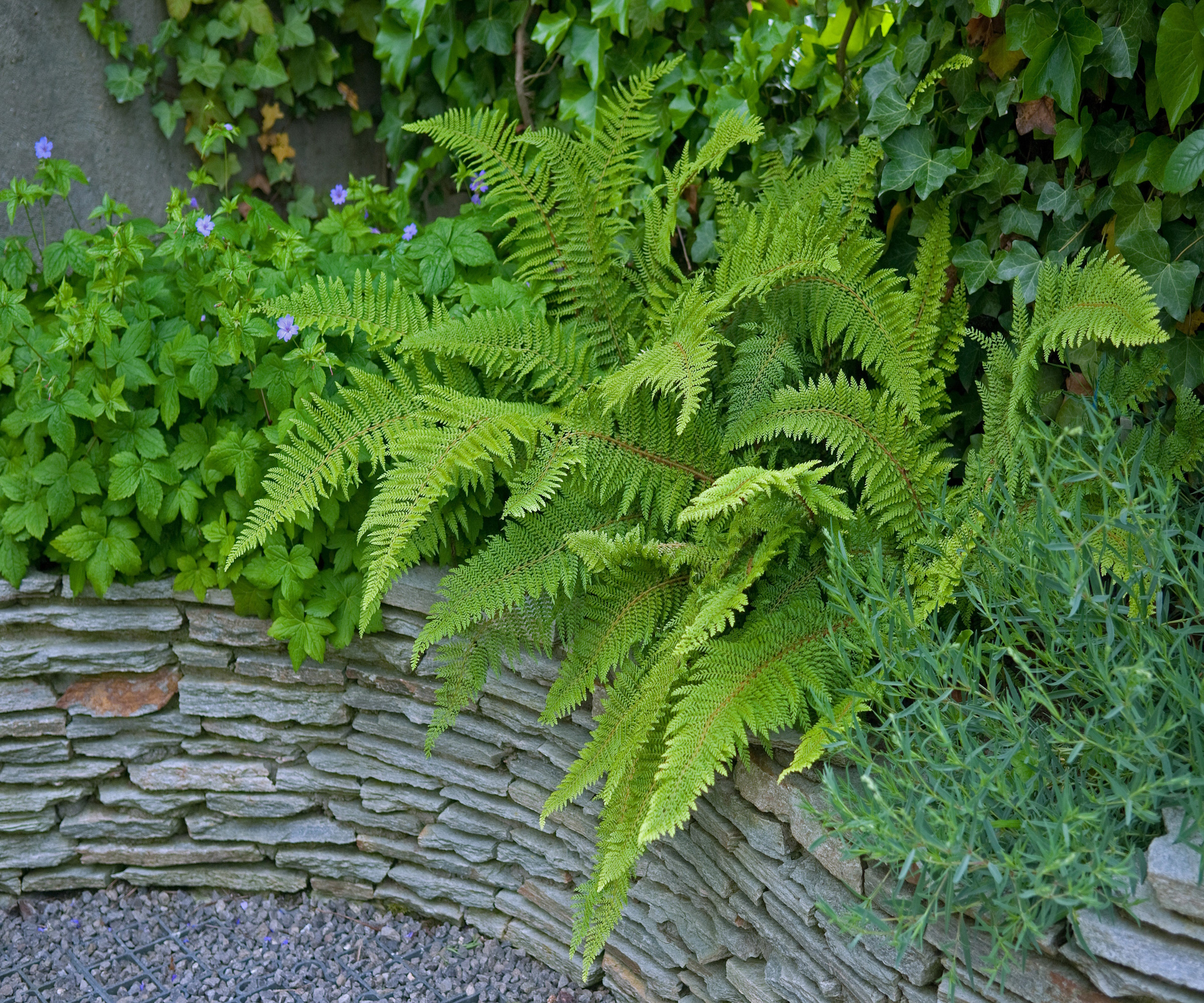
A handsome evergreen fern, native to Britain, these lush green fronds emerge upright in spring, before unfurling and relaxing into a graceful arc. Ideal for growing in part shady borders and under trees.
It prefers a damp spot in well-draining soil. Hardy in zones 7a to 9a, it needs little care, just cut back fronds in January to make way for spring bulbs and new growth.
‘Polystichum setiferum has yielded even more amazingly spectacular cultivars that elicit immediate lust,’ says Judith Jones, fern expert and owner of Fancy Fronds Nursery. ‘Some of the cultivars offer vegetative bulbils that grow on to be copies of the parent.’
Broad Buckler fern
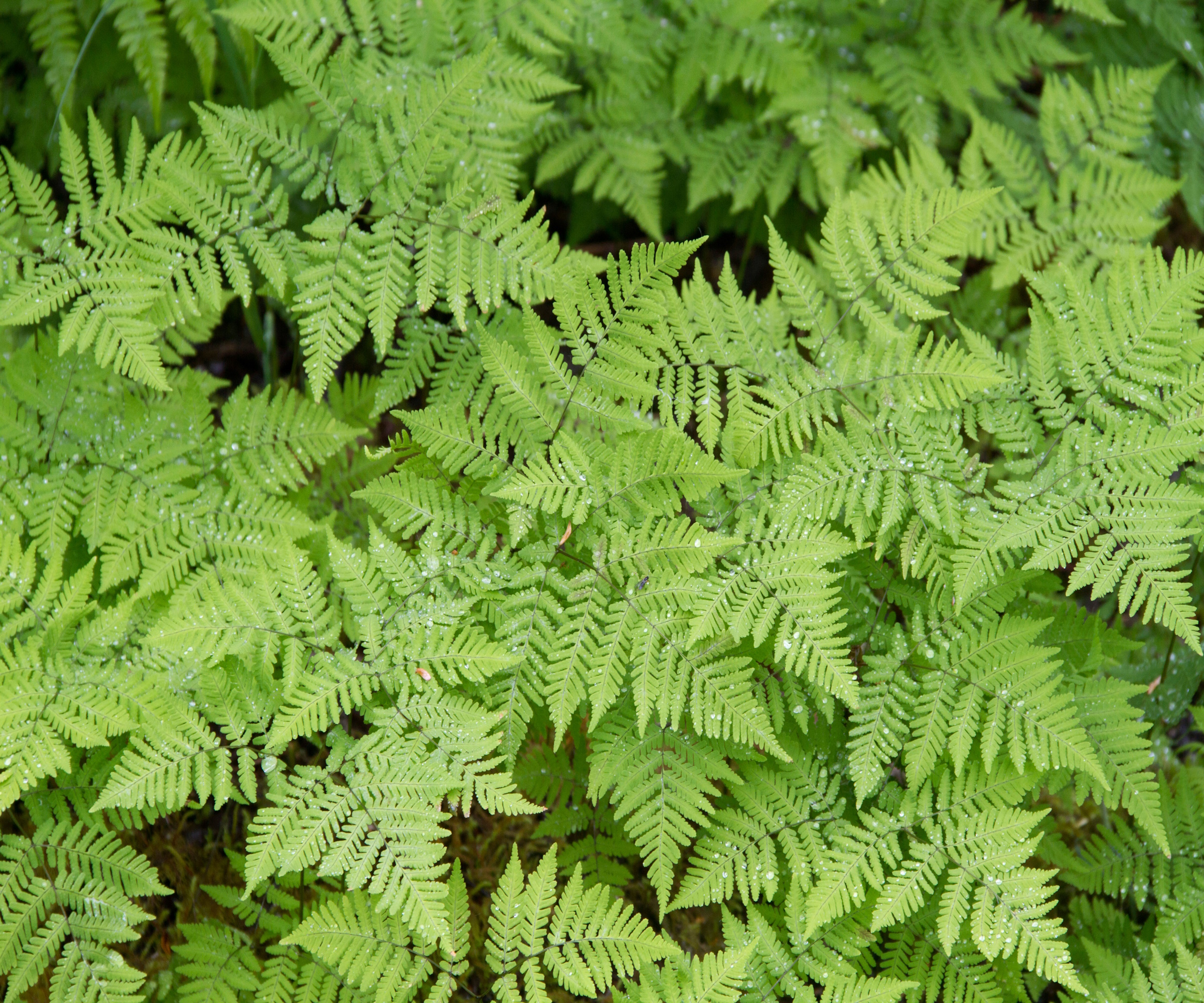
Also known as wood fern, this semi evergreen fern instantly recognisable for it's spear-like fronds with deeply toothed edges. Measuring up to 4 or 5 feet (1.5m) high, they add a touch of verdant texture to shady woodland borders and mix well with spring blooms such as bluebells, wood anemones and aconites.
Belonging to the Dryopteris group, these ferns can be deciduous, semi-evergreen or evergreen with erect or decumbent fronds.
'Dryopteris dilatata has forms that range from low arching triangular shaped fronds to ones sporting a delicate network of cobwebby tatting,' says Judith Jones.
Judith's obsession with Victorian literature and furniture eventually led her to discover the wide world of Victorian fern cultivation and taxonomy. Since the 1980s, Judith has named and introduced several new cultivars of ferns, and is a leading expert on the identification of temperate fern species. She was mentored in Pteridology by Jimmy Dyce of the British Pteridological Society and lectured at the 125th Anniversary of the British Pteridological Society.
American Maidenhair Fern

A delicate, low-growing variety, Adiantum pedatum thrives best in full shade. Preferring cooler, moist soil and humid conditions it will instantly add an ethereal air to any border or pot.
Hardy in zones 3-8, they are a deciduous fern, dying back in fall and reshooting each spring. The apple green foliage has a ultras-matt surface that easily sheds water droplets, adding to its otherworldly charm. Maidenhair ferns are available from Nature Hills.
‘American Maidenhair ferns reach only about 12-15” tall at maturity and tend to tend to grow more outward, slightly drooping habit,’ says Katie Sunderlage.
‘An interesting feature is the shiny dark purple/black stalks that divide into 3-9 leaflets that are arranged in a half circle shape, making each stalk almost appear to have a hand. We recommend planting alongside corydalis, lungwort and dwarf hosta.’

Operations Manager at Holland Group, managing the customer service department and purchasing. Katie has been in the green industry since 2005 in the Greater Milwaukee area, earning her degree in Horticulture in 2008. She has been able to share her love for plants working in multiple garden centers, in sales positions and most recently in an online retail platform at Holland Group.
Painted Lady Burgundy Lace Fern
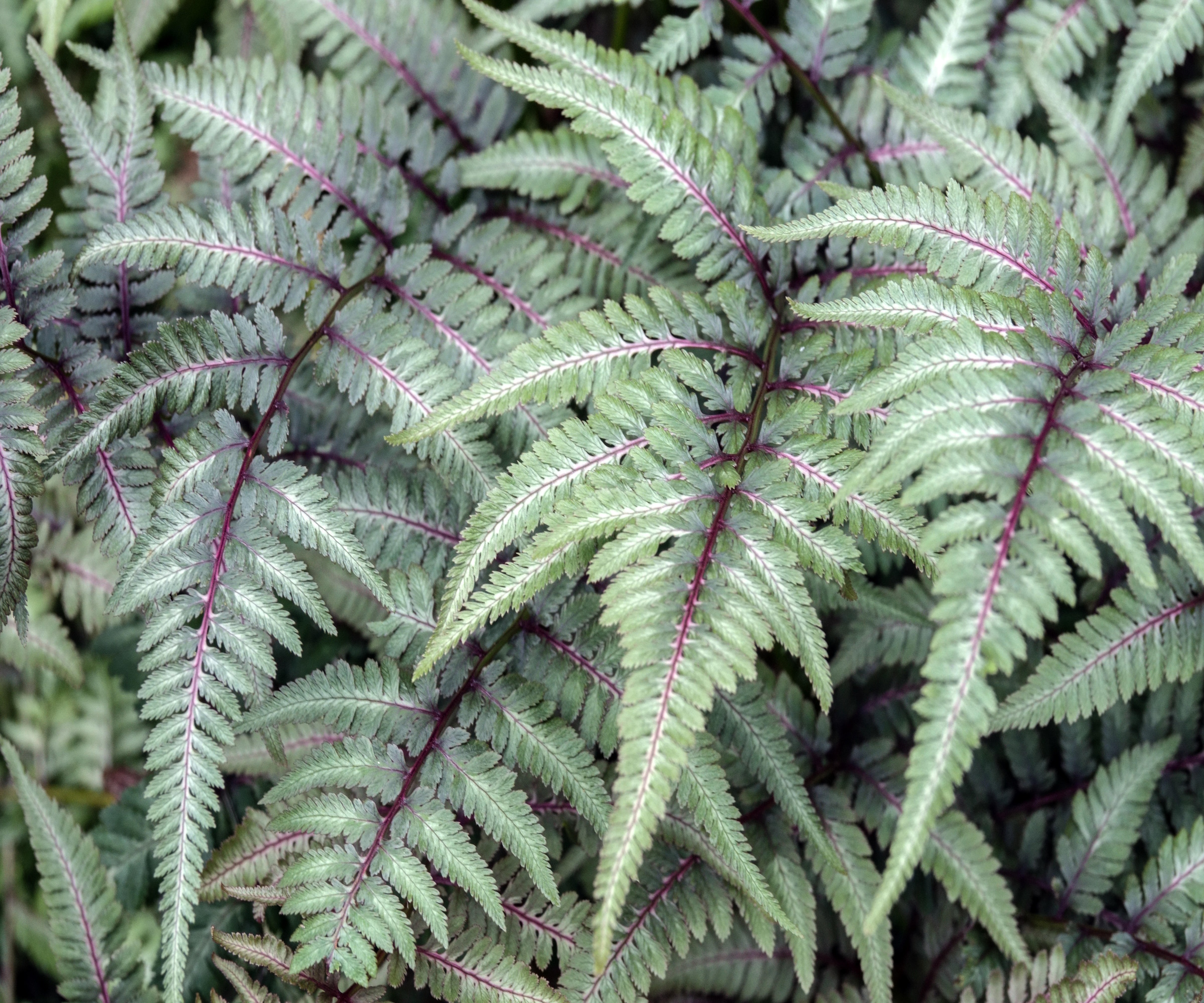
One of the most spectacular ferns for shady borders has to be Athyrium 'Burgundy Lace' or 'Painted Lady Burgundy Lace' fern. With silver to green foliage and bold burgundy to purple stalks it’s a real head-turner in woodland gardens.
‘Like most ferns, they prefer nutrient rich, moist soil and shade to part shade conditions,’ says Katie Sunderlage.
‘This variety has a slightly upright habit but will droop toward the tips of each stalk. Painted Lady ferns reach 15-20” tall and pairs perfectly with upright, taller green ferns like ostrich fern, hosta and also astilbe.’
Christmas fern
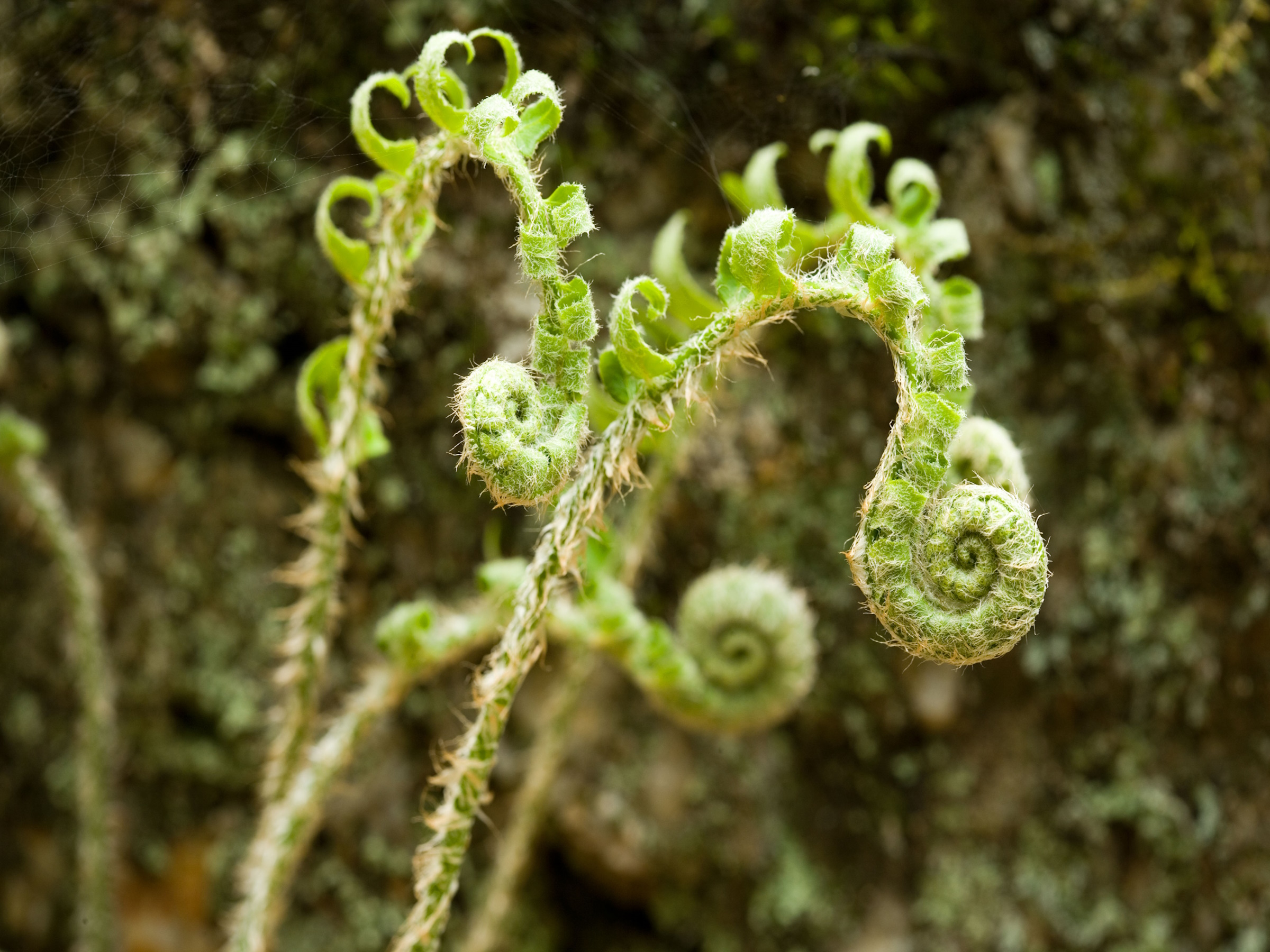
Christmas fern or Polystichum acrostichoides to give its botanical name, is a truly fascinating plant. 'Shorter, sprawling, with glossy foliage in a deeper green that lasts and lasts. It's also super cold hardy,' says perennial and bulb expert, Megan Foster. 'We love pairing this fern with woodland Phlox divaricata for a soft landing under trees.'
Easy going with little need for any upkeep, this fern is happy in most well drained soils and will provide a lush backdrop for woodland blooms and perennials all year round. Producing a mass of rhizomes, it’s also a great choice for planting on slopes and helping to prevent erosion.
Brilliance Autumn Fern
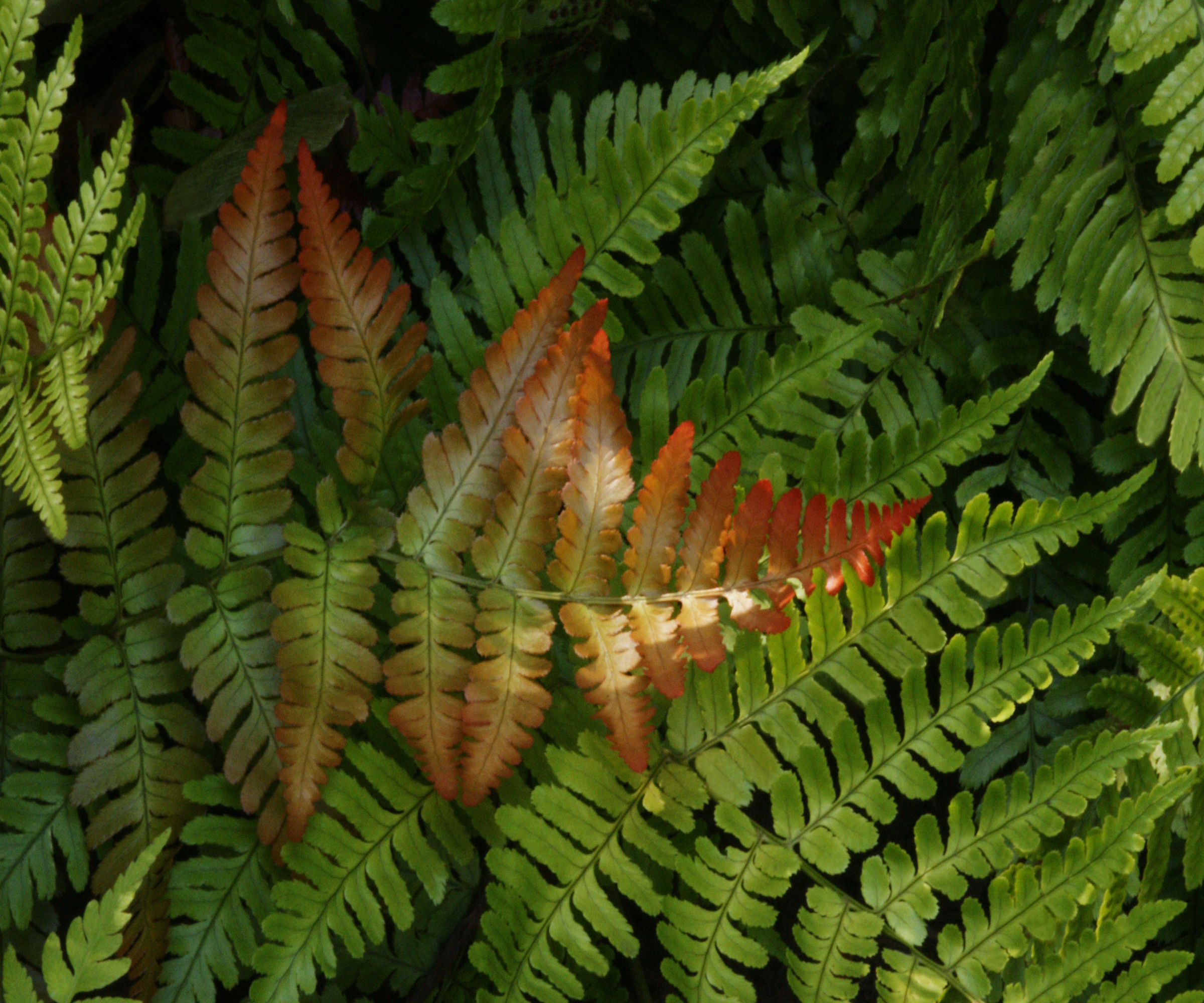
For ferns that dazzle with color, try Dryopteris erythrosora – more memorably known as 'brilliance autumn' fern. ‘With finely cut triangular fronds with a burnished copper over a springy green, we love to team this with hostas for strong texture contrast,’ says Megan.
The underside of each deeply-cut evergreen blade bears orange-red spores during the fall, making it even more showy, and perfect for brightening up part shade and full shady spots.
You can find this stunning autumn fern available to order from Fast Growing Trees.

Megan is the Category Manager overseeing perennials and bulbs for AmericanMeadows.com since 2019. With a keen eye for color and passion for pollinators she curates pre-planned gardens for the brand. Her instinct for what gardeners want also drives the spring and fall bulb assortments. She gardens in zone 5 in Vermont.
Dicksonia Antarctica
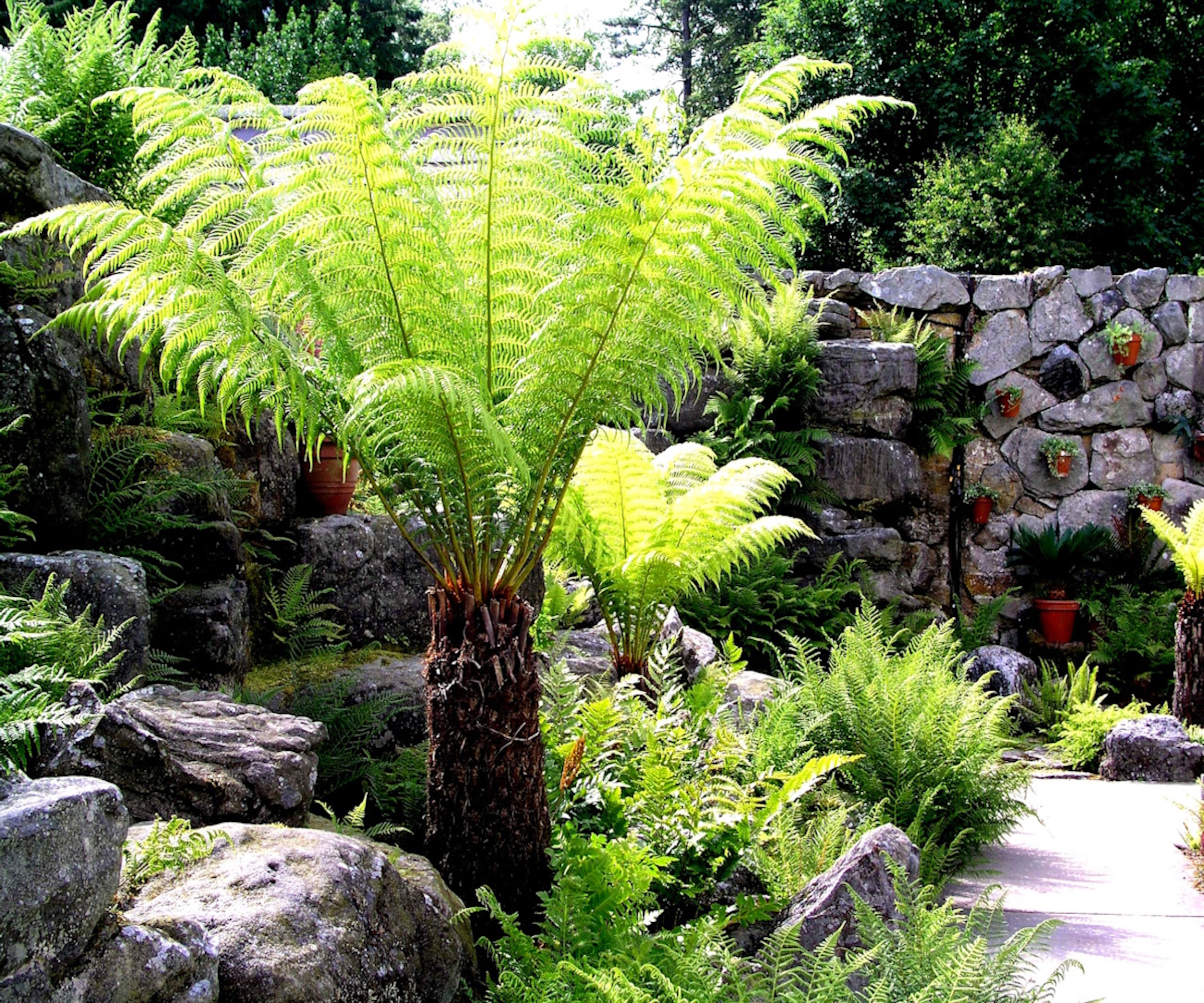
Tree ferns are the epitome of lush, New Zealand rainforests. With their rough yet sturdy trunks - consisting of compacted roots and rhizomes - they can reach the heady heights of 16ft (5m) topped with majestic arcing fronds measuring 5ft (1.5m) in length.
Preferring temperate conditions, unprotected they will only survive temperatures above 41F (5C) and do not tolerate hot conditions where their crowns and trunks dry out completely.
Fantastic for adding architectural form and height to a shady spot, make sure it is sheltered and away from strong winds to avoid the foliage from being damaged.
FAQs
What is the best plant for deep shade?
Dating from around 350 million years ago, ferns are amongst the happiest plants that will thrive in deep shade. Hailing from damp rocky crevices and densely shade forest floors they are perfectly adapted to damp, humid, low light conditions.
Amongst the most robust and commonly found ferns are shuttlecock fern - Matteuccia struthiopteris - with it's graceful upright fronds; glossy hart's tongue fern - Asplenium scolopendrium and the deciduous Japanese shield fern - Dryopteris erythrosora.
Discovering the best fern varieties for shade can inspire you to think completely differently about the dingiest areas of your garden. If you feel tempted to make further changes be sure to check out these best shrubs for shade and part shade perennials.

Journalist Jill Morgan has spent over 20 years writing and editing gardening, interior and property features. Titles she has worked on include The English Home, House Beautiful, Ideal Home, Houzz and Modern Gardens and she writes regularly for H&G as a Contributing Editor. Whilst she is a dab hand at renovation projects and DIY, she is happiest when out digging in the garden or planning a new border.